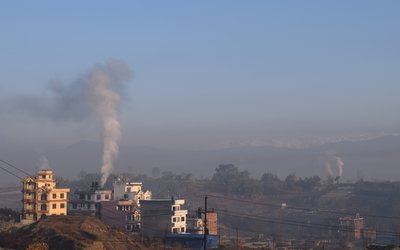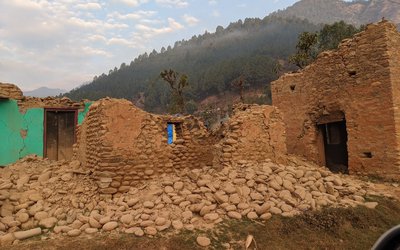
Tihar time!
Laxmi Puja is celebrated by worshipping the cow on the third day of Tihar. The ox and the person who helps to plow the field (hali) are worshipped on the fourth day. On the final day, the sister worships the brother and wishes him a long life. We see that the birds and animals are worshipped, not merely remembered, for their contribution to the human society.
Worship!
I want to make it clear in the beginning that I am not opposed to the ongoing tradition of worshipping the Laxmi or the cow. However, let us analyze what we really feed the animals/birds whose products we enjoy as a nutritious protein food. For nutrition, we raise the cows, other animals or the poultry birds commercially too. Since open fields are not available anymore, commercial feeds are used to raise the animals. The quality of the feed has a direct effect on the quality of the market products like meat, milk, and eggs. Aflatoxinsparticularly AFB1 produced by toxigenic Aspergillus mold contaminated the dry feeds. AFB1 is most potent known carcinogenic secondary metabolite that develops in improperly stored poor quality food/feed. AFB1 is metabolized and secreted into the milk as AFM1, also a carcinogen, within about 12 hours of feeding.If a toxin-free diet is given for 3-4 days, the toxin cannot be detected in the milk.
Feeding cattle large doses of aflatoxins within a short period resulting in aflatoxin poisoning (aflatoxicosis). This will manifest as anemia, easy bruising, reproductive inefficiency, including abnormal estrous/ heat cycles (too short or too long) and abortions. Other symptoms include impaired immune response, increased susceptibility to other diseases and rectal prolapse.Long-term exposure to aflatoxins results in symptoms of feed refusal, reduced growth rate, reduced milk production and decreased feed conversion efficiency. Weight loss, rough hair coat, and mild diarrhea may occur.
Cattle being fed aflatoxin-contaminated feeds secrete AFM1 in their milk long before the symptoms appear. The shedding in urine and feces is insignificant. Cancer effect per sein livestock for meat purpose is not recognized and there is not much information regarding animals raised for milk purpose. Researchers have analyzed dairy and meat products and have pointed to the need to improve feed quality.
Is there any way out to minimize toxins in feeds?
This goes to the central issue of minimizing invisible toxins in the dry food system. We have argued earlier that moisture is the culprit of dry foods. We need to dry the harvested foods, especially maize, within 4-5 days to processing moisture contents and package into water-proof containers. However, the traditional practice has been to harvest food crops, let them dry naturally either inside the house or in raised open structures like Suli or Thangro. Porous containers are used to store foods like paddy making the moisture content of the stored foods to fluctuate according to the ambient environment. Thus, natural drying cannot easily dry food like maize and rice harvested during the rainy season to processing moisture contents. Due to lack of awareness and lack of drying resources, the toxigenic molds begin to develop in the storage. There are pre-harvest molds too which begin to disappear in the storage. Even at the moisture content where these molds do not develop, the insects cause massive visible damage to the grains depriving the people of the nutrients. This moisture regimen for profuse insect activity is between 9-14%. However, pesticide-free airtight/hermetic packaging can control the insects and also minimize nutrient loss at such moisture regimen.
When the growers cannot manage moisture content of their dry products, the quality deteriorates. In other words, toxic mold and insects build up and nutrients decline. The decline in nutrients is not obvious to the growers. They prefer to use such poor quality product proudly as feeds to animals and birds. There is no awareness that the toxic product ends up in the dairy and animal products.
If we feed poor quality feed (laden with toxins) for 364 days and worship on Laxmi Puja day, this seems irony to me. Looks like we are making the animal sick by feeding toxic feed for 364 days and unknowingly inviting ill health to her as well. Dysentery is one of the visible symptoms of feeding aflatoxin infested feed.
So, my conscience does not allow me to celebrate Laxmi Puja until we improve feed/food quality. Please see how serious health problems are hovering around our head: liver cancer and malnutrition being prominent ones. Promise to start looking for quality food/feed could be a real worshipping point on Laxmi Puja day.
Dr Peetambar Dahal
Soil Scientist, University of California, Davis , USA
- Laxmi Puja And The Hidden Irony II
- Oct 26, 2019















